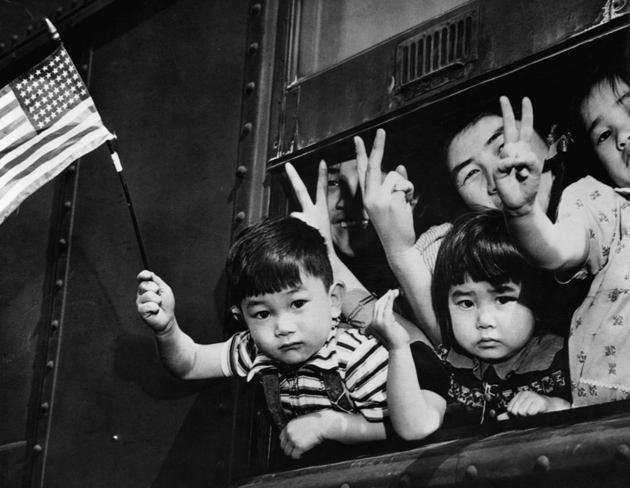In response to:
How the Justices Get What They Want from the December 8, 2011 issue
To the Editors:
One very important subtlety to the Hirabayashi and Korematsu cases, which upheld the relocation of Japanese-Americans during World War II, should be noted [Robert W. Gordon, “How the Justices Get What They Want,” NYR, December 8, 2011]. The Supreme Court, in establishing the strict scrutiny test, made clear that executive authority and legislative enactments could allow racial discrimination only on one basis—national security. Having so decided, the justices were then fully aware that national security could never be a justification for any other form of racial discrimination, including de jure segregation.
In short, Brown v. Board of Education could have been decided much earlier, but the justices delayed action because Felix Frankfurter, Robert Jackson, and Fred Vinson were too timid. Vinson’s successor Earl Warren, a politician, was not a timid man. The force of his personality and persuasion prevailed even over Stanley Reed.
Michael Haas
Professor Emeritus of Political Science University of Hawai‘i
Los Angeles, California
Robert W. Gordon replies:
In the Japanese relocation cases, the Supreme Court said that “all legal restrictions which curtail the civil rights of a single racial group are immediately suspect,” and that “courts must subject them to the most rigid scrutiny.” But it also said that such restrictions might be justified by “pressing public necessity” and in fact gave great deference to military and executive assertions that all Japanese-Americans living on the West Coast were potentially disloyal and there was no effective means for sorting out the loyal ones.
In 1944 it was scarcely imaginable that the general principle of the case would have any direct application to the Jim Crow regimes of de jure segregation. The Court had repeatedly reaffirmed Plessy v. Ferguson, the 1896 case upholding the constitutionality of segregated public facilities. The US military itself was still segregated.
It only became feasible to think of overturning Jim Crow after a decade of social change: the mobilization of returning black soldiers, the push for civil rights by the all-black Pullman Porters union and other activist groups, the NAACP’s legal campaign, the desire of US policymakers to appeal to nonaligned nations in the cold war, and the rise to power of moderate white politicians who hoped a racially peaceful New South would attract business, among many other things.
Even so, the result in Brown v. Board of Education (1954) was hardly foreordained. As late as 1952, Justice William O. Douglas, counting votes on the Court to overturn de jure school segregation, found only four, his own and those of Justices Hugo Black, Harold Burton, and Sherman Minton. Chief Justice Fred Vinson, Tom Clark, and Stanley Reed were opposed. Frankfurter and Jackson were not yet convinced that the Fourteenth Amendment had forbidden states to segregate schools, and were very worried about Southern backlash and resistance. Warren’s replacing Vinson tilted the Court’s majority.
As Professor Haas says, Warren’s leadership and diplomacy were the crucial factor in producing a unanimous opinion in Brown. Ironically in the war years, Warren, as attorney general and governor of California, had pushed hard for the policy of relocating Japanese-Americans. He later regretted that policy. By 1954, the Hirabayashi and Korematsu cases were well on their way to pariah status. The Court did not cite them in its Brown opinion.
This Issue
February 9, 2012
The Wrong Leonardo?
Václav Havel (1936–2011)
The Republican Nightmare




